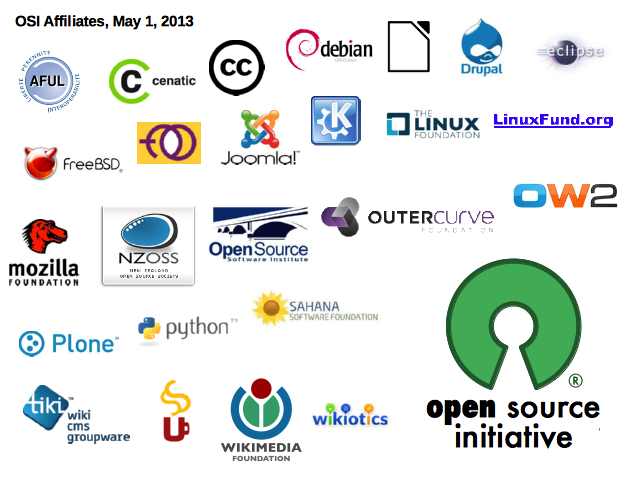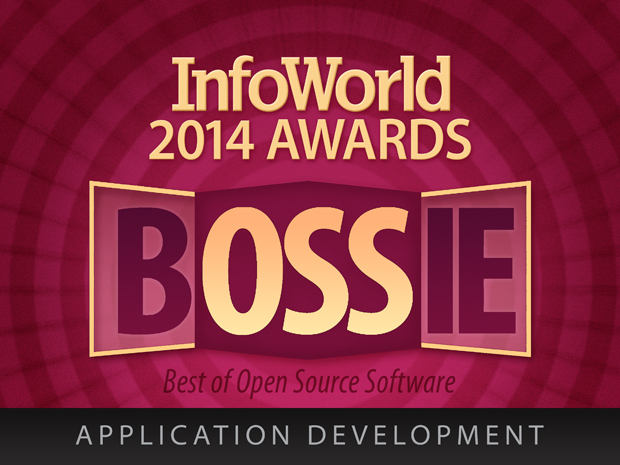Open-source is software with its source code made available with a license in which the copyright holder provides the rights to change and distribute the software freely. In open source operating systems, the complete source code is freely available and anyone can make changes and create their own environment as necessary. These open source OS are advantageous as anyone with better ideas can develop it out of the existing OS and distribute freely. These software have good reliability, stability, auditability, flexibility and more over it is economically feasible.
Reliability
Open source software are highly reliable. By reliable I mean the absence (to a large extent) of defects which cause incorrect operation, data loss or sudden failures- NO BUGS! Able developers who discover a bug (as code is open for everyone) can fix it and then report it to the maintainers as well as issuing an updated version of the software on their own authority. Users of the software can choose whether to use the unofficial fix or wait for an `official’ version depending on their need.
Viruses
Viruses are set of codes inserted in-between the actual program codes to create malware and malfunctions in the program. When infected, they multiply and infect other files too. Since the code is open to all in open source software, anyone can detect it and remove the code. Therefore open source software claim to posses NO VIRUSES!
Stability
In the real world, no business is static and software changes to meet new requirements. A choice to use open source software counteract the pressures to upgrade the software for commercial purposes. These upgrades cannot protect users from changes, required or not. Having access to the source code can allow a business to choose to support itself on an old version where necessary and we believe that in general this gives more options and choices to the users.
Auditability
Software forces its users to trust the vendor when claims are made for qualities such as security, freedom, adherence to standards and flexibility in the face of future changes. If the source code is not available those claims remain simply claims.
By publishing the source code, authors make it possible for users of the software to have confidence that there is a basis for those claims.
Cost
Most current open source projects are also available free of royalties and fees as profit is not the main goal as the code is open for all and the code can be taken directly from the creator and run without the intervention of third parties.
Flexibility
Software flexibility is about being able to choose solutions suitable for the needs of the users. In the context of companies this flexibility is very useful where base software can be coded and codes can be further edited for the various requirement of similar work, so that as requirements in the business change, solutions should not be unreasonably constrained by software.
Quality
Open-source model has claimed to produce better software than the proprietary closed-source models. The argument has been that the open-source development model allows multiple participants to peer-review effectively code developed by others. This has been claimed to lead to the fast development of high-quality systems
The Dawn of Open Source
The modern concept of commercializing software emerged in the 1970s, when the computer equipment industries started to differentiate software from hardware, and independent software firms started to produce software for industry-standard computer platforms. Over the decade, this development led to the realization that software was associated with important intellectual capital which could provide its owners with revenue streams.
In 1983, AT&T was freed from the constraints which had restricted its ability to commercialize software, and it started to enforce its copyrights in the popular Unix operating system. The growing restrictions on access to source code also started to make it difficult to integrate peripheral equipment, such as printers, into the developed systems. This frustrated many software developers, and led Richard Stallman to launch the GNU project in 1983 and the Free Software Foundation in 1985.
Stallman’s pioneering idea was to use copyrights in a way that guaranteed that the source code would remain available for further development and that it could not be captured by commercial interests. For that purpose, Stallman produced a standard license, the GNU General Public License(GPL), and set up to develop an alternative operating system that would eventually be able to replace proprietary operating systems. Although the GNU Alix/Hurd operating-system kernel never really dominated, the GNU project became a critical foundation for the open-source movement. The tools developed in the GNU project, including the GNU C-language compiler GCC, the C-language runtime libraries, and the extendable Emacs program editor, paved the way for the launching of other open-source projects. The most important of these became the Linux project, partly because it was the last critical piece missing from the full GNU operating-system environment. Thus open source software became the topic of the decade that everyone considered as a worthy opponent for the Windows commercialization!
Linux and Open Source
The Linux kernel was not the first open source software (some argue that GNU Emacs was), but it is certainly the most famous and successful – the prime mover behind the popularization of open source development and the use of free open source products. Today the Linux kernel is the foundation of a rich variety of operating system distributions, the poster penguin of open source software, and the number one inductee into our open source hall of fame.
Linux was developed as the kernel for GNU. The Linux core combined with a large set of open-source tools and applications, many of which relied on the GNU program libraries and used the GPL. The first version of Linux-based operating system was released on the Internet in mid-September 1991. The amount of code in the first Linux release was quite modest. The smallest file consisted of a single line and the longest was 678 lines, or 612 lines without comments. The average size of the files in the first Linux package was 37 lines without comments. In total, the system consisted of 88 files, with 231 kilobytes of code and comments. The program was written in the C programming language by Linus Torvalds.
During the 1990s, the Linux kernel grew at a rapid pace. The number of key contributors recorded in the Credits file of the Linux system increased from 80 in March 1994, when they were first recorded, to 418 in July 2002, and 450 by the end of 2003. The developers were widely distributed geographically from the beginning of the project. In July 2002, there were 28 countries with ten or fewer developers and seven countries with more than ten developers. At the end of 2003, the Credits file recorded contributors from 35 countries. Since Linux was open source, people from many countries had access to its source code and many people started developing it.
Many powerful open source software have been developed and are available in the market freely. Some of them include Apache(which currently runs 64% of surveyed Internet websites), Perl, MySQL and PHP, Sendmail and BitTorrent; and these have also considerably shaped the modern computing landscape. In fact, the global Internet now operates to a large extent on open source software. Commercial concerns, such as IBM, Sun Microsystems, Oracle, SAP, Motorola and Intel have become important players in the open-source field.
Asterisk, the open source VoIP phone system, also makes the cut in our networking wing. Asterisk has advanced telephony features and also become easier to manage, with several web-based interfaces now available.
Rules to Develop an Open Source Software
1. Free Redistribution
The license will not restrict any party from selling or giving away the software. The license shall not require a royalty or other fee for such sale.
2. Source Code
The program must include source code, and must allow distribution in source code as well as compiled form. The source code must be in the preferred form in which a programmer would modify the program. Deliberate complication of source code is not allowed. Intermediate forms such as the output of a preprocessor or translator are not allowed.
3. Derived Works
The license should allow modifications and derived works, and should allow them to be distributed under the same terms as the license of the original software.
4. Integrity of the Author’s Source Code
The license may restrict source-code from being distributed in modified form. The license should compulsorily permit distribution of software built from modified source code. The license may require derived works to carry a different name or version number from the original software.
5. No Discrimination against Persons or Groups
The license must not discriminate against any person or group of persons.
6. No Discrimination against Fields
The license must not restrict anyone from making use of the program in a specific field. For example, it may not restrict the program from being used in a business, or from being used for genetic research.
7. Distribution of License
The rights attached to the program must apply to all to whom the program is redistributed without the need for execution of an additional license by those parties.
8. License Must Not Be Specific to a Product
The rights attached to the program must not depend on the program’s being part of a particular software distribution. If the program is extracted from that distribution and used or distributed within the terms of the program’s license, all parties to whom the program is redistributed should have the same rights as those that are granted in conjunction with the original software distribution.
9. License Must Not Restrict Other Software
The license must not place restrictions on other software that is distributed along with the licensed software.
10. License Must Be Technology-Neutral
No provision of the license may be predicated on any individual technology or style of interface.
Award for Open Source Software: BOSSIE Award!
Every year InfoWorld selects its Bossie Award winners- the best open source software for business. The software which has best influenced business are selected and given this prize. Some of the BOSSIE award winners are D3, FAMO.US, jquery and atom.
“If you want to build an open source project, you can’t let your ego stand in the way. You can’t rewrite everybody’s patches, you can’t second-guess everybody, and you have to give people equal control.” -Rasmus Lerdorf, inventor of PHP.
Aravind is doing his masters in Biotechnology and Bioinformatics. He loves reading science fiction and his interest also lies in the field of evolutionary biology and genetics. He is particularly interested in learning Indian culture and tradition and has studied Yajur veda and yoga for 10 years




Related Articles
No user responded in this post